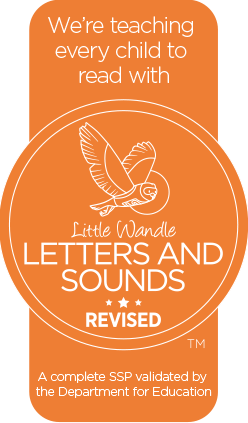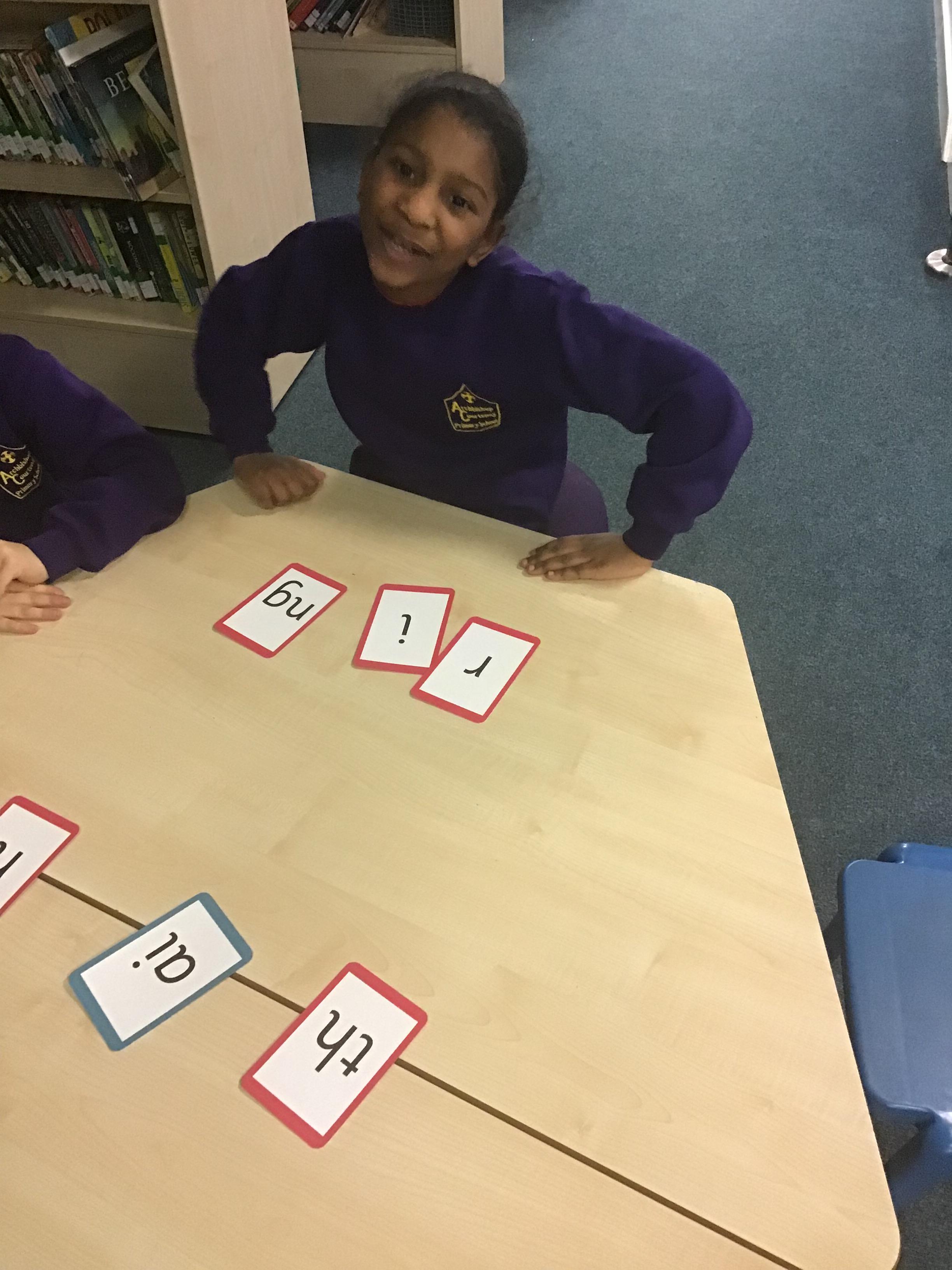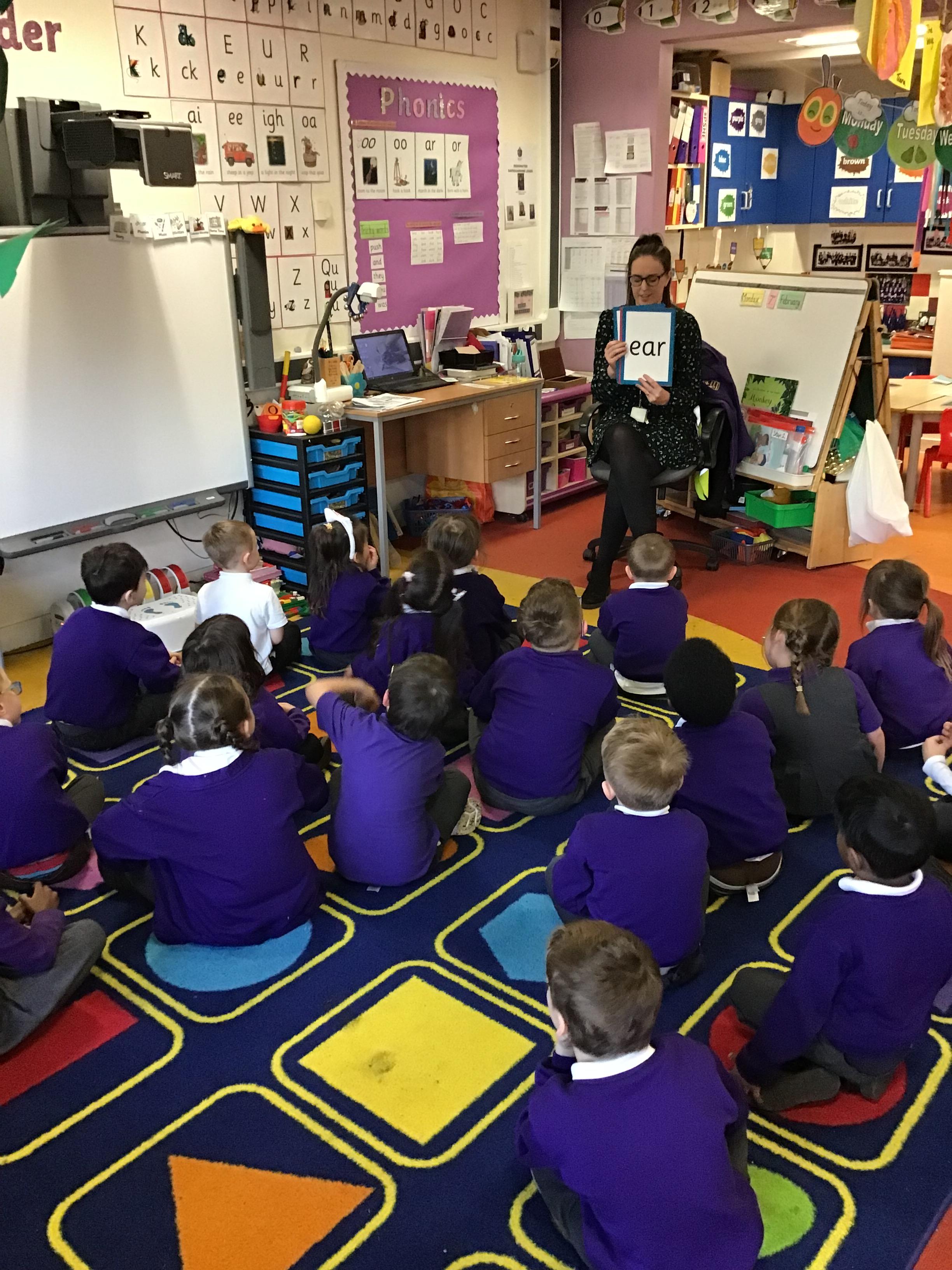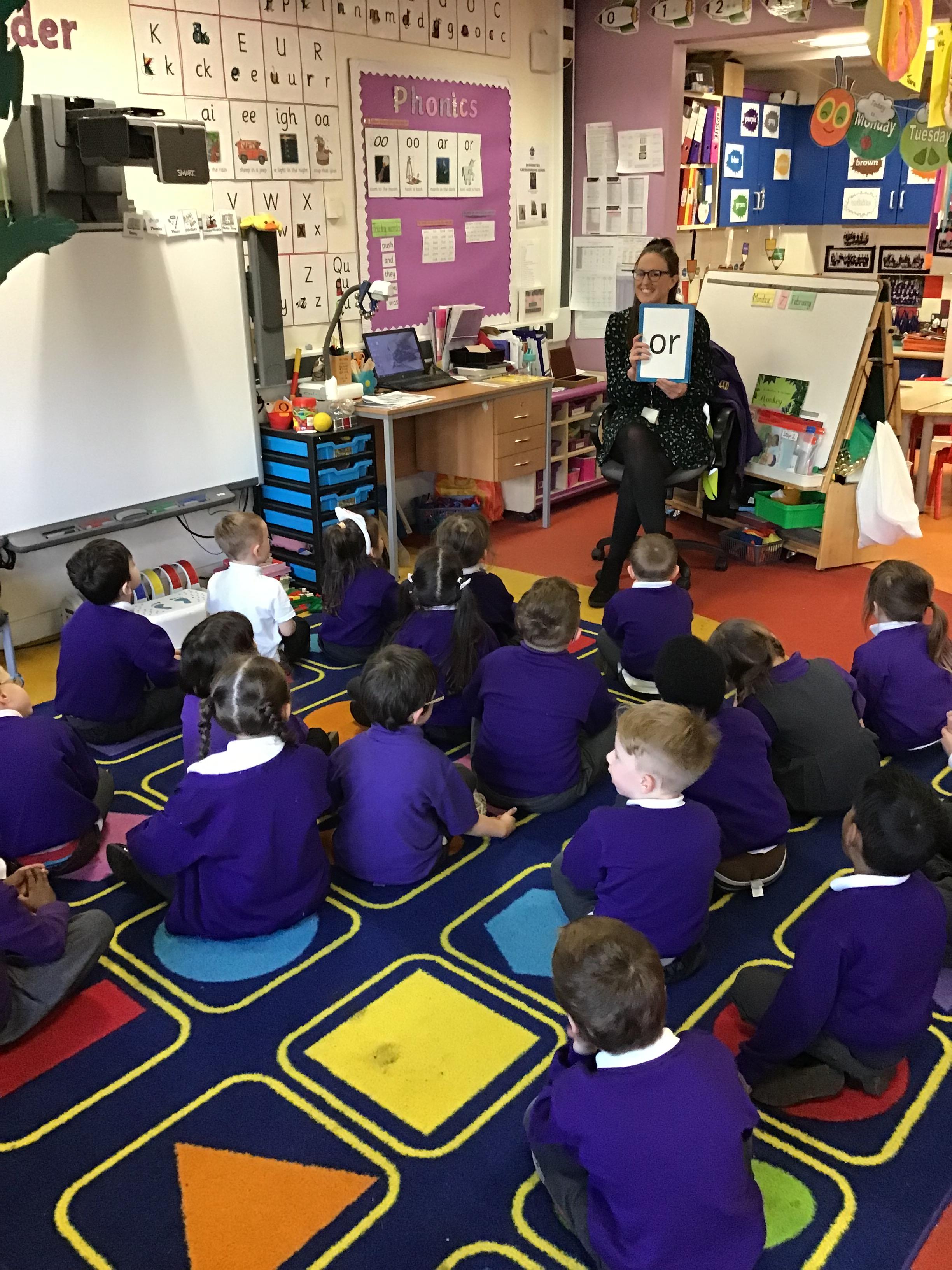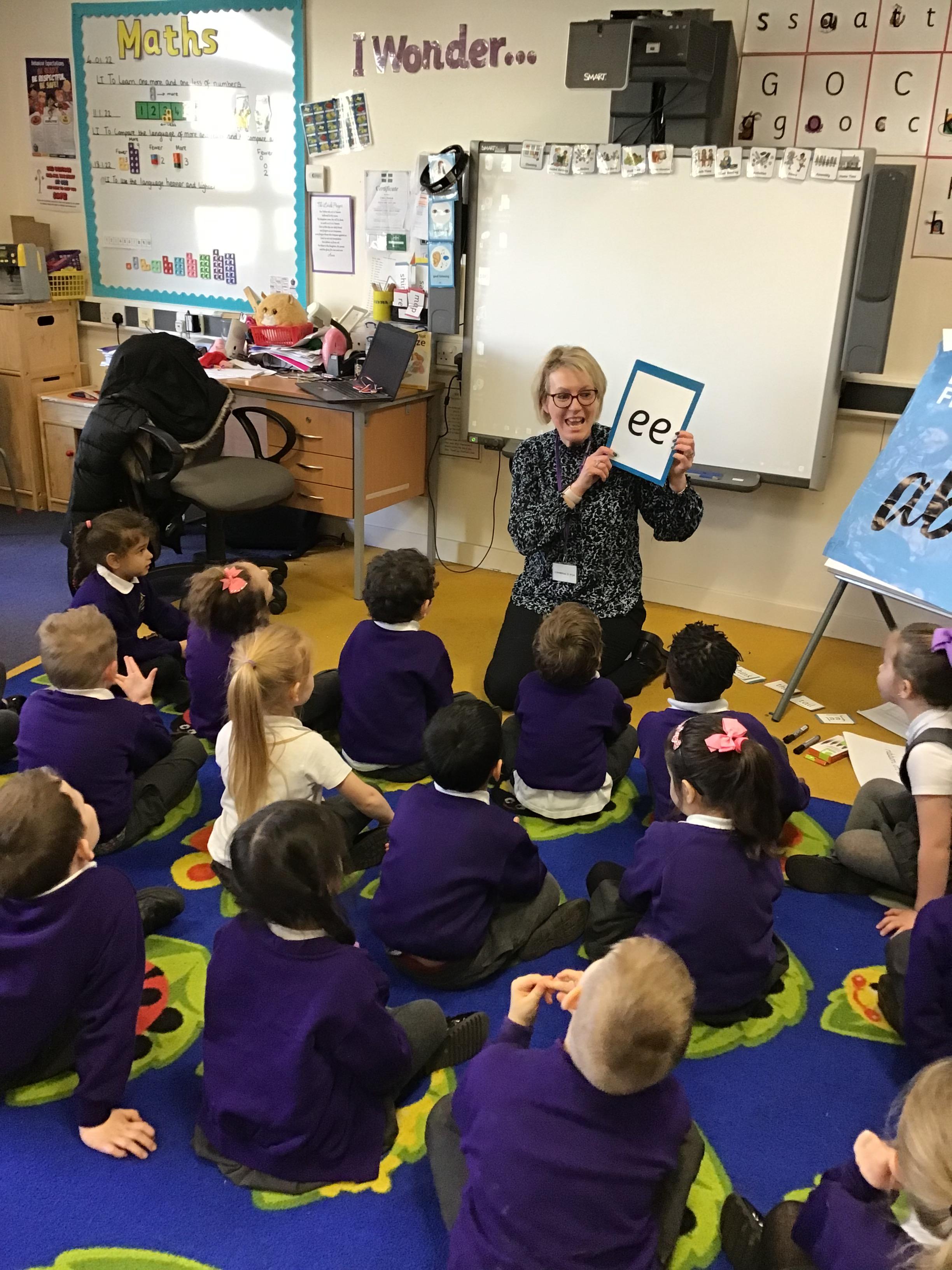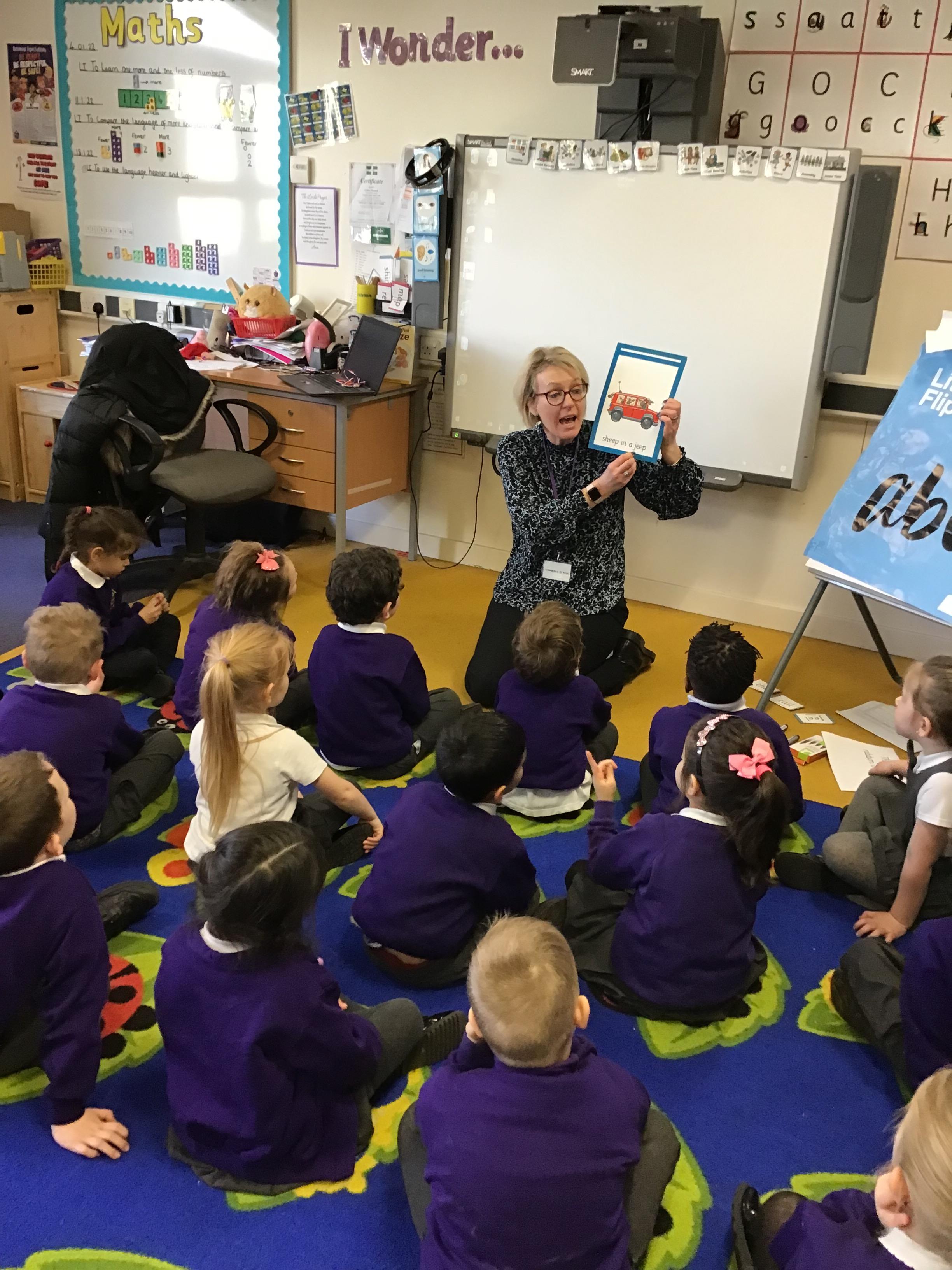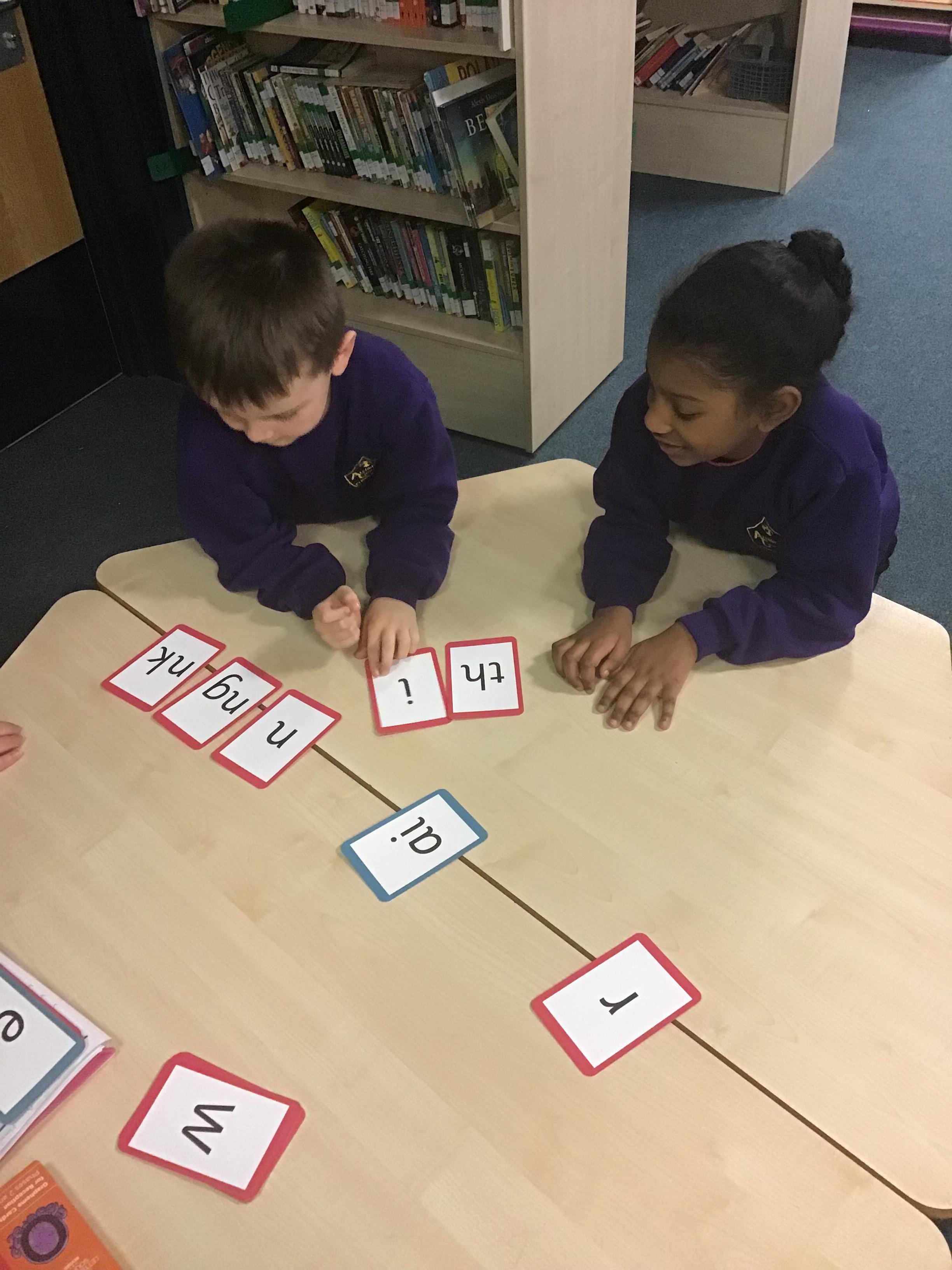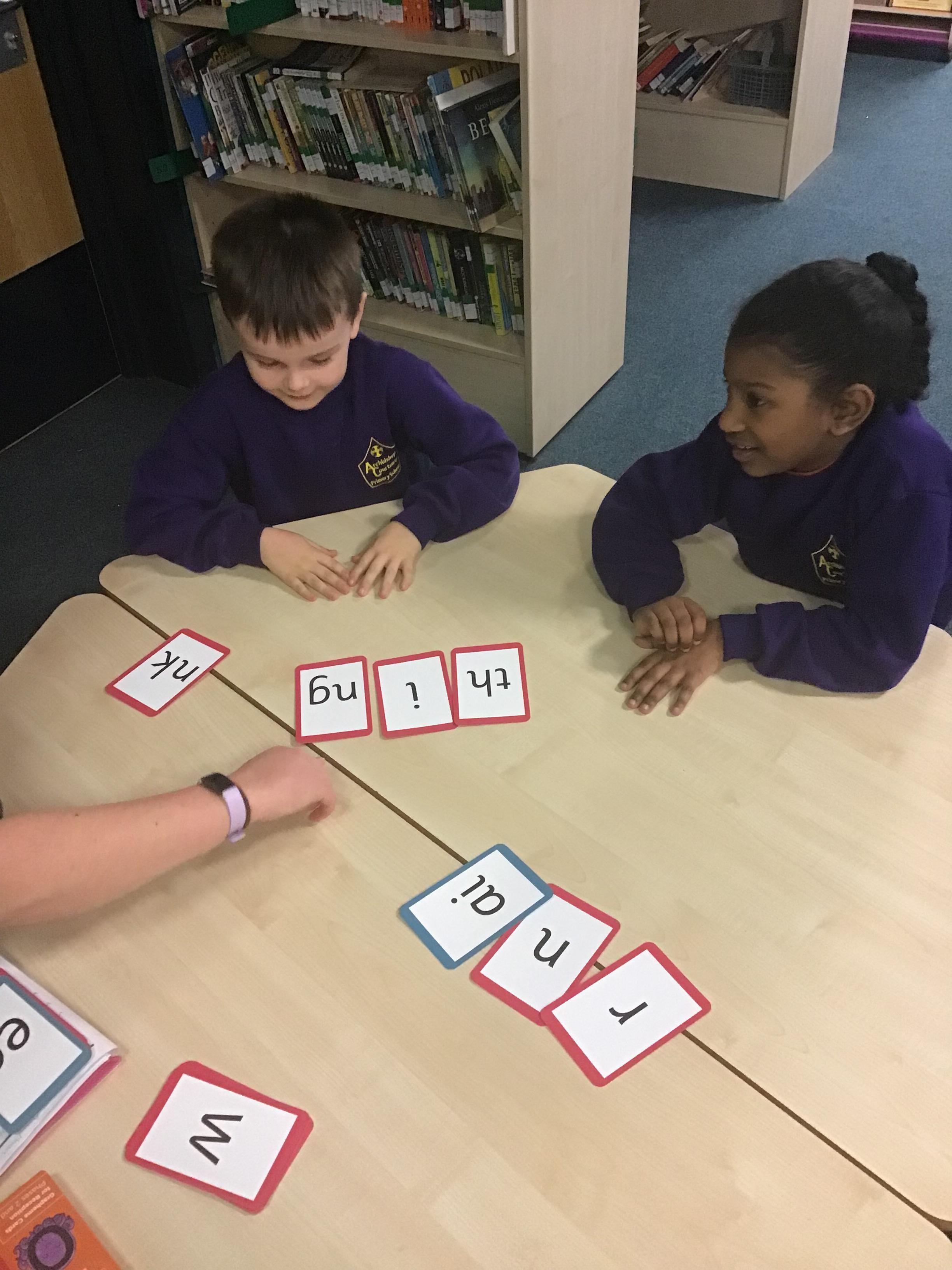Phonics

 |
 |
 |
 |
 |
| Long-term Plan and Progression | Phonics at Home | Gallery |
Phonics Lead: Miss Elphick
 At Archbishop Courtenay Primary School we believe that all our children can become fluent readers and writers. This is why we teach reading through Little Wandle Letters and Sounds Revised, which is a systematic and synthetic phonics programme. We start teaching phonics in Reception and follow the Little Wandle Letters and Sounds Revised progression, which ensures children build on their growing knowledge of the alphabetic code, mastering phonics to read and spell as they move through school.
At Archbishop Courtenay Primary School we believe that all our children can become fluent readers and writers. This is why we teach reading through Little Wandle Letters and Sounds Revised, which is a systematic and synthetic phonics programme. We start teaching phonics in Reception and follow the Little Wandle Letters and Sounds Revised progression, which ensures children build on their growing knowledge of the alphabetic code, mastering phonics to read and spell as they move through school.
As a result, all our children are able to tackle any unfamiliar words as they read. We also model the application of the alphabetic code through phonics in shared reading and writing, both inside and outside the phonics lesson and across the curriculum. We have a strong focus on language development for our children because we know that speaking and listening are crucial skills for reading and writing in all subjects.
As in all areas of the curriculum, we promote a love of learning, wisdom, hope and dignity. Reading underpins children’s access to the curriculum, and it clearly impacts on their achievement. There is considerable research to show that children who enjoy reading and choose to read benefit not only academically, but also socially and emotionally. To be able to read, children need to be taught an efficient strategy to decode words. That strategy is phonics.
British Values
At Archbishop Courtenay Primary school, we understand clearly our responsibility in preparing children for future opportunities, responsibilities and experiences of later life, laying the foundations so that they can take their place successfully in modern British society. This is evidenced through our teaching and learning, our inclusive environment and through the many opportunities provided for our children to understand democracy, law, liberty, mutual respect and tolerance. By connecting our British Values through the teaching of Reading, we explore issues that affect us all in our lives and this helps inform decisions that will shape our future. For example, through the Little Wandle programme, children will explore individual liberty and mutual respect, where they learn to understand that they need to take turns and listen to others. Children are supported to develop their self-knowledge, self-esteem and self-confidence through everyday teaching and learning of phonics and the nurture support that we offer.
Planning
We use Little Wandle Letters and Sounds for the teaching of phonics throughout the school. We teach phonics for 30 minutes a day. In Reception, we build from 10-minute lessons, with additional daily oral blending games, to a full-length lesson as quickly as possible. Each Friday, we review the week’s teaching to help children become fluent readers. Children make a strong start in Reception: teaching pf phonics begins in Week 3 of the Autumn term.
We follow the Little Wandle Letters and Sounds Revised expectations of progress:
- Children in Reception are taught to read and spell words using Phase 2 and 3 GPCs, and words with adjacent consonants (Phase 4) with fluency and accuracy.
- Children in Year 1 review Phase 3 and 4 and are taught to read and spell words using Phase 5 GPCs with fluency and accuracy.
Assessment
Assessment is used to monitor progress and to identify any child needing additional support as soon as they need it.
Assessment for learning is used:
- Daily within class to identify children needing keep-up support
- Weekly in the Review lesson to assess gaps, address these immediately and secure fluency of GPCs, words and spelling.
Summative assessment is used
- Every six weeks to assess progress, to identify gaps in learning that need to be addressed, to identify any children needing additional support and to plan the keep-up support that they need.
Statutory assessment
Children in Year 1 sit the Phonics Screening Check. Year 1 will take the Phonics Screening check during the summer term.
Year 2 pupils who do not meet the expected standard in Year 1, will be expected to take the statutory check in this year, alongside year 1 pupils.
Ongoing assessment for catch-up
- Children in Year 2 to 6 are assessed through their teacher’s ongoing formative assessment as well as through the half-termly Little Wandle Letters and Sounds Revised summative assessments.
Collective Evidence
At Archbishop Courtenay Primary School, we believe that all pupils should have the opportunity to share their pupil voice. We do this in a number of ways. The curriculum allows opportunities for pupils to develop the skills, knowledge and understanding when using their pupil voice. The subject leader finds out pupil’s opinions about the teaching of Phonics and the content covered through interviewing selected pupils during lesson observations. The subject leader acts upon the comments and suggestions of pupils wherever possible.
Enrichment Opportunities
- World Nursery Rhyme Week 15th to 19th November EYFS-Year 2
- BBC Radio 2 500 words —Years 3– 6
- Spelling Bee—April 2022 Whole School
- FUDGE sessions
- Library Trips for EYFS and KS1
Targets
- To ensure fidelity to the Little Wandle Phonics scheme.
- To ensure children are accessing fully decodable books that they are confident to read with 90% fluency.
- To ensure that Y1 phonics attainment remains in line with national expectations or above
- Impact
This will be monitored through the collection of pupil and staff voices, up-to-date data from our summative assessments, looking through the children’s books and learning walks with lesson observations.
Phonics at Home
- Little Wandle: https://www.littlewandlelettersandsounds.org.uk/resources/for-parents/
- Guide to phoneme pronunciation: https://youtu.be/TTe5_Em0BHQ
- Phonics screening information for parents: https://assets.publishing.service.gov.uk/government/uploads/system/uploads/attachment_data/file/194057/phonics_check_leaflet_2013_.pdf
- Phonics screening materials: https://www.gov.uk/government/publications/phonics-screening-check-sample-materials-and-training-video
phonics
